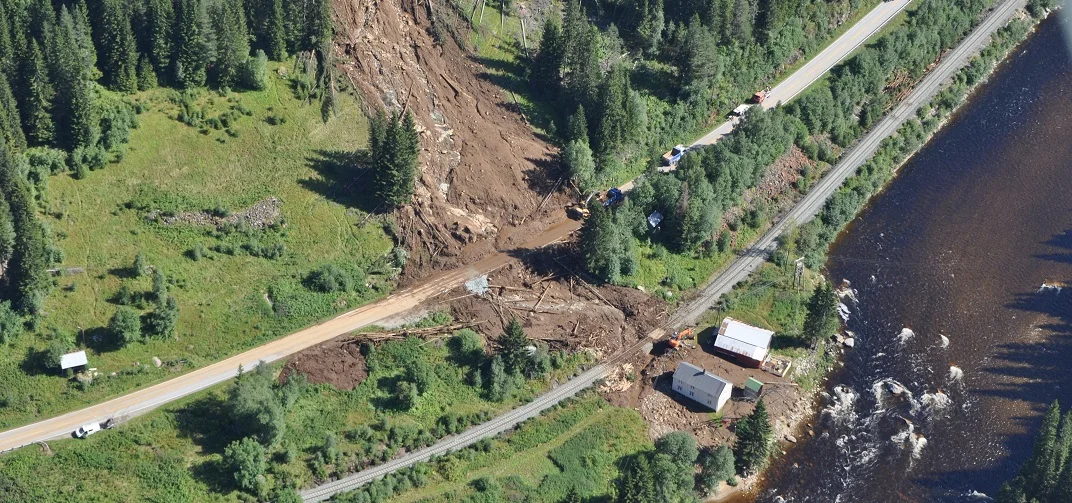Early-Warning Systems for landslides
A global evaluation of early-warning systems for water induced landslides in Klima 2050 identified weak aspects in the Norwegian system. Our results contribute to improve the system as follows:
Increasing the performance of the system by optimising thresholds, which are the basis for the warning.
Building capacity of stakeholders and users of the system.
In the mitigation of landslide risk, there are cases when it is not feasible to implement physical measures that prevents exposed elements (infrastructure, buildings) from being hit by landslides. In such situations, it becomes necessary to implement mitigation measures that reduce the exposure of people in transit or occupying buildings. This reduction of exposure (and consequently, risk) can be achieved by designing and implementing early-warning systems. In Klima 2050, a global review of territorial early-warning systems for landslides has been carried out (Piciullo, Calvello and Cepeda, 2018). The main result of this review is a comparative analysis of the strengths and weaknesses of warning systems in terms of the following aspects:
Types of landslides
Optimisation of thresholds
Additional information
Performance
Weather forecast
Public statements
Capacity building of stakeholders
Territorial early warning systems for landslides evaluated by Piciullo, Calvello and Cepeda (2018)
In the aforementioned evaluation, the Norwegian early-warning system was weakest in two aspects: optimised thresholds, and capacity building of stakeholders. The identification of these two aspects has already helped to guide priorities in the posterior activities in Klima 2050 under this topic.
In order to improve threshold evaluations that are the basis of the warning, a master thesis (Falck, 2018) developed computer codes for assisting in an optimised pre-processing of the data used for modelling thresholds. The results of this thesis are presented at the EGU2019 conference (Falck, Cepeda and Boje, 2019). This conference contribution also includes cooperation with the landslide warning section at NVE.
Finally, the improvement of educational and building capacity aspects will be achieved by engaging stakeholders actively in the formulation of a framework that integrates technical, organisational and communication components of the early warning system. The stakeholders include owners of infrastructure (including Klima 2050 partners, such as the NPRA and Bane NOR, via the Norwegian Railway Directorate) and Norwegian municipalities.
SCIENTIFIC BASIS
Piciullo, L, Calvello, M & Cepeda, J.M: Territorial early warning systems for rainfall-induced landslides. Earth-Science Reviews 2018, Vol 179, p. 228-247; doi.org/10.1016/j.earscirev.2018.02.013 ISSN 0012-8252 (Published online 21 February 2018)
Falck, M: Hydrometeorologiske terskler for jordskred på lokal skala - Undersøkelser i Hornindal og Gudbrandsdalen. Master Thesis. University of Oslo, Oslo 2018
Falck, M, Cepeda, J and Boje, S: Improvement of landslide thresholds at regional scale by using a new pre-processing algorithm. Application to Central Norway. European Geosciences Union General Assembly 2019. Vienna, Austria, 7-12.04.2019


